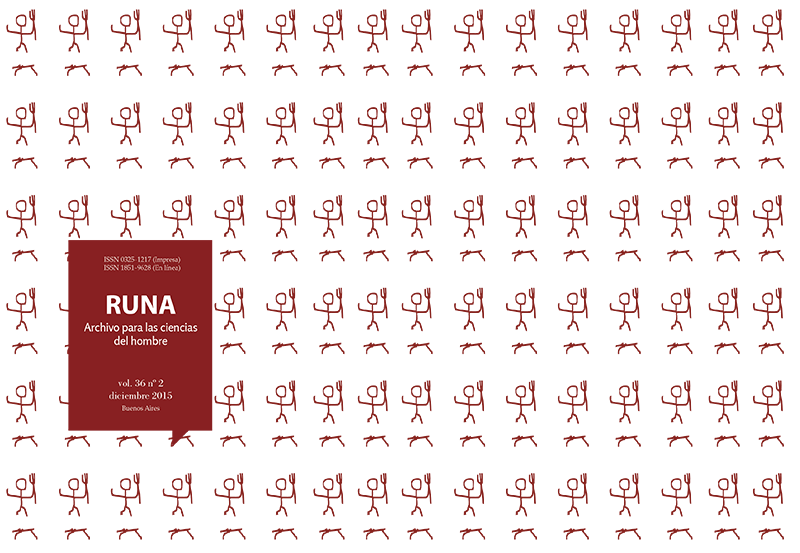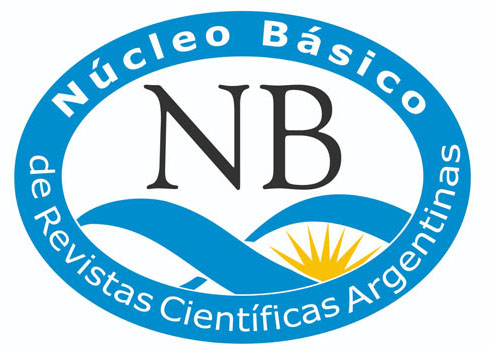Una vuelta a la “casa bonita”. Un bricolage interpretativo de las fuentes documentales sobre los rituales de menarquía de los pueblos originarios de la Patagonia argentina (Siglos XIX y XX)
Resumen
El principal objetivo de este trabajo es proponer un nuevo análisis del texto del británico Georges Musters, de su descripción de una ceremonia de menarquía (a la que denominó “casa bonita”) observada entre tehuelches de la Patagonia en 1869, para contextualizarla históricamente y desde una perspectiva de género.Desde la metodología cualitativa hemos armado un bricolage que se expresa en un recorrido articulado por una genealogía de fuentes documentales del siglo XIX, por testimonios producidos en trabajos antropológicos y lingüísticos en la segunda mitad del siglo XX, y por registros etnográficos de nuestros trabajos en historia oral que focalizan en rituales para propiciar el hilado.La triangulación de fuentes de los documentos seleccionados nos lleva a pensar en la hipótesis que en las ceremonias de primera menstruación, del siglo XIX en adelante, se propiciaba el apego al hilado y tejido, en sociedades que también ritualizaron toda la esfera del trabajo textil.Descargas
Citas
AGUERRE, Ana María. 2000. Las Vidas de Paty en la toldería Tehuelche del Río Pinturas y el después. Buenos Aires: Oficina de Publicaciones de la Facultad de Filosofía y Letras. UBA.
AVENDAÑO, Santiago. 2000. Usos y costumbres de los indios de La Pampa, (Recopilación del P. Meirando Hux). Segunda Parte de las Memorias del ex cautivo Santiago Avendaño. Buenos Aires: Elefante Blanco.
BACIGALUPO, Ana Mariella. 2002. “La lucha por la masculinidad de machi: políticas coloniales de género. Sexualidad y poder en el sur de Chile”.Revista de Historia Indígena, 6: 29-64
BIDASECA, Karina. 2010. Perturbando el texto colonial. Los estudios (Pos) coloniales en América Latina, Buenos Aires: Editorial S B
BOURDIEU, Pierre. 1985. ¿Qué significa hablar?.Economía de los intercambios lingüísticos, Madrid: Akal.
BOURDIEU, Pierre. 2000. La dominación masculina, Barcelona: Anagrama
BRIONES, Claudia. 1998, La alteridad del “Cuarto Mundo”. Una deconstrucción antropológica de la diferencia. Buenos Aires: Ediciones del Sol.
BUCKLEY, Thomas y GOTTLIEB, Alma.1988, Blood Magic The Anthropology of Menstruation. Berkeley: University of California Press.
CASAMIQUELA, Rodolfo. 1988. En pos del Gualicho Buenos Aires: Eudeba
COX, Guillermo. Viaje a las regiones septentrionales de la Patagonia1862-186 Santiago de Chile: Imprenta Nacional
DE BEAUVOIR, Simone 1981. El segundo sexo. Los hechos y los mitos., Buenos Aires: Siglo Veinte.
De la CRUZ, Luis. 1969. "Viaje desde el Fuerte Ballemar hasta Buenos Aires en: Pedro de Angelis". En: Colección de obras y documentos, Tomo II. Buenos Aires: Plus Ultra. pp. 1-492
DENZIN, Norman & LINCOLN, Yvonna. 2005. The Sage Handbook of Qualitative Research. California: Thousand Oaks. Sage Publications

Runa, archivos para las ciencias es una publicación del Instituto de Ciencias Antropológicas, Facultad de Filosofía y Letras, Universidad de Buenos Aires y se distribuye bajo una Creative Commons Attribution 4.0 International License..
Runa sostiene su compromiso con las políticas de Acceso Abierto a la información científica, al considerar que tanto las publicaciones científicas como las investigaciones financiadas con fondos públicos deben circular en Internet en forma libre, gratuita y sin restricciones.
Los contenidos y opiniones expresadas en los artículos publicados son de entera responsabilidad de sus autores.



















